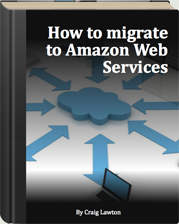We’ve covered legacy IT, use-case and business case issues. Today we’re talking about the immaturity of private clouds themselves.
There are 4 areas where private cloud deployments haven’t matured yet that you must contemplate:
- Software licensing – When migrating legacy software to private clouds it gets very difficult to track software licensing. Where previously you had a pretty static license pool, in a private cloud your usage may expand and shrink. How do you manage that? For example, how do you deploy Oracle RDBMS in a private cloud if you don’t have an Enterprise agreement? A nightmare!
- Lack of standards – There are many cloud platforms, some proprietary, some open-source. All these are different to their public cloud companions. It’d be good if a public service provider would let you install your own cloud platform on their tin. It’d make hybrid cloud a lot easier. One day I suppose. Until then you have to manage your public and private APIs differently.
- Compliance leakage – Your private cloud is a single environment. Anything that has regulatory or compliance requirements (like PCI-DSS) can’t go on there without bringing the whole cloud into scope because of…..
- The immaturity of cloud networks – I know SDN will save the world but for now the underlying networking concepts of different clouds are of a differing standard and sophistication. Many enterprises therefore deploy cloud networks in a basic, pre-provisioned fashion. (Read about the 6 challenges of private cloud networks in this F5 document.)
I suspect one day cloud platforms, standards, licenses etc. will converge enough so that you are running the same technology in private and public cloud stacks. Possibly AWS will provide an on-premise cloud stack, or a provider will start letting you install your own cloud platform as already mentioned. At least with this last one, the enterprise is finally free of the need to actually deal with hardware. What will we call infrastructure specialists then!?
The default answer is that IT’s vision is to provide hybrid or “multi-cloud” environments but not many people can actually articulate what that means, how it can be achieved, and why business users should care.
In the last post in this series we’ll look at the ways forward.



